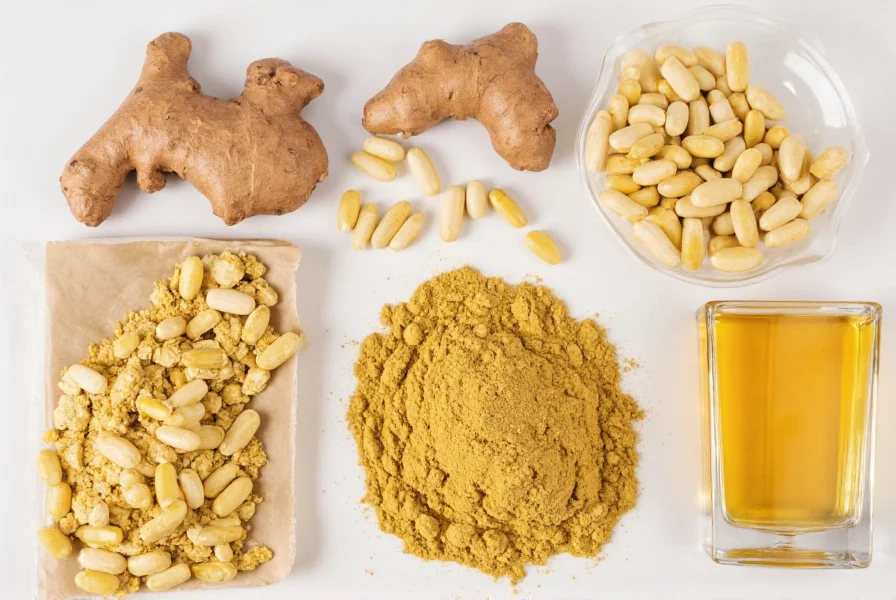For centuries, ginger root (Zingiber officinale) has been a cornerstone of traditional medicine across Asian and Middle Eastern cultures. Modern science continues to validate many of these traditional uses, revealing ginger's impressive pharmacological profile. This rhizome contains over 400 bioactive compounds, with gingerols and shogaols being the primary components responsible for its therapeutic effects.

Science-Backed Health Benefits of Ginger Root
Nausea and Digestive Support
One of ginger root's most well-documented benefits is its effectiveness against various forms of nausea. A comprehensive 2020 review published in Nutrients analyzed 19 clinical trials involving over 1,300 participants and concluded that ginger significantly reduces nausea severity compared to placebo. What makes ginger root good for morning sickness is particularly noteworthy—multiple studies show it safely alleviates pregnancy-related nausea without adverse effects on fetal development.
Ginger stimulates gastric motility and accelerates stomach emptying, which explains why ginger root for digestive issues works so effectively. It also demonstrates promise in managing chemotherapy-induced nausea, with research showing it enhances the effectiveness of conventional anti-nausea medications.
Inflammation Reduction and Pain Relief
Ginger root benefits for inflammation stem from its potent anti-inflammatory compounds. A 2019 study in Arthritis Research & Therapy found that ginger extract reduced inflammatory markers by up to 28% in osteoarthritis patients. The mechanism involves inhibition of COX-2 enzymes, similar to how non-steroidal anti-inflammatory drugs (NSAIDs) work, but with fewer gastrointestinal side effects.
Research on ginger root for muscle pain shows particularly impressive results. In a double-blind trial, participants who consumed 2 grams of ginger daily experienced 25% less muscle soreness after intense exercise compared to the placebo group. This makes ginger an excellent natural option for athletes and those with chronic pain conditions.
| Health Benefit | Recommended Dosage | Time to Notice Effects | Scientific Evidence Level |
|---|---|---|---|
| Nausea relief | 1-1.5g daily | 30-60 minutes | ★★★★☆ (Strong) |
| Inflammation reduction | 2g daily | 2-4 weeks | ★★★☆☆ (Moderate) |
| Muscle pain relief | 2g daily | 24-48 hours | ★★★☆☆ (Moderate) |
| Blood sugar regulation | 2-3g daily | 8-12 weeks | ★★☆☆☆ (Emerging) |
Immune System and Metabolic Benefits
When exploring what ginger root is good for beyond digestion, its immune-modulating properties deserve attention. Gingerols enhance white blood cell activity while reducing pro-inflammatory cytokines. This dual action makes ginger root benefits for immune support particularly valuable during cold and flu season.
Emerging research suggests ginger may help regulate blood sugar levels. A 2021 meta-analysis in Complementary Therapies in Medicine found that ginger supplementation significantly reduced fasting blood glucose and HbA1c levels in type 2 diabetes patients. While not a replacement for diabetes medication, these findings indicate ginger root for blood sugar management could be a valuable complementary approach.
Cardiovascular Protection
Studies examining ginger root benefits for heart health show promising results. Research indicates ginger can lower LDL cholesterol by up to 17% and triglycerides by 14% with regular consumption. It also demonstrates mild antihypertensive effects, potentially through calcium channel blocking activity. These cardiovascular benefits make ginger an excellent addition to heart-healthy diets.
How to Use Ginger Root Effectively
Understanding how to use ginger root for specific conditions maximizes its therapeutic potential. For nausea relief, consuming 1 gram of fresh ginger (about a 1-inch slice) 30 minutes before potential triggers works best. For chronic inflammation, consistent daily intake of 2 grams provides optimal results.

Different preparation methods affect ginger's bioactive compounds. Fresh ginger contains more gingerols, while dried or cooked ginger has higher shogaol content, which is more potent for pain relief. For digestive issues, ginger tea made from freshly grated root provides immediate soothing effects.
Safety Considerations and Potential Side Effects
While generally safe, understanding ginger root side effects is crucial. Some individuals experience mild heartburn or mouth irritation, particularly with raw ginger. The maximum safe daily dosage is 4 grams for most adults, though pregnant women should limit intake to 1 gram daily.
Ginger may interact with blood thinners like warfarin due to its mild anticoagulant properties. Those with gallstones should consult a physician before regular consumption, as ginger stimulates bile production. Always discuss significant dietary changes with your healthcare provider, especially if managing chronic conditions.
Conclusion
The scientific evidence supporting ginger root benefits continues to grow, validating many traditional uses while revealing new therapeutic applications. From its impressive anti-nausea properties to its potential role in managing chronic inflammation and metabolic health, ginger represents one of nature's most versatile medicinal plants. When incorporated appropriately into a balanced health regimen, ginger root offers a safe, natural option for addressing multiple common health concerns.
Frequently Asked Questions
What specific conditions is ginger root most effective for?
Ginger root shows strongest evidence for treating nausea (including pregnancy-related morning sickness, motion sickness, and chemotherapy-induced nausea), reducing muscle pain after exercise, and alleviating symptoms of osteoarthritis. It's also effective for general digestive support and shows promising results for blood sugar regulation in type 2 diabetes management.
How much ginger should I consume daily for health benefits?
For general health benefits, 1-2 grams of fresh ginger root daily is sufficient. For specific conditions: 1-1.5g for nausea relief, 2g for inflammation and muscle pain, and 2-3g for blood sugar management. This equals approximately 1-inch fresh root slice, 1 teaspoon of powdered ginger, or 2-4 cups of ginger tea daily. Do not exceed 4 grams total daily.
Can ginger root interact with medications?
Yes, ginger may interact with blood thinners like warfarin due to its mild anticoagulant properties. It could potentially enhance the effects of diabetes medications, requiring blood sugar monitoring. Those taking hypertension medications should consult their doctor, as ginger may lower blood pressure. Always discuss ginger supplementation with your healthcare provider if you take prescription medications.
Is fresh ginger more effective than powdered ginger?
Both forms offer benefits but contain different active compounds. Fresh ginger has higher gingerol content, making it better for nausea and digestive issues. Dried or cooked ginger converts gingerols to shogaols, which are more potent for pain relief and anti-inflammatory effects. For most health benefits, either form works well, though some studies suggest fresh ginger may provide slightly stronger immediate effects for gastrointestinal issues.
How long does it take to experience ginger's health benefits?
The timeframe varies by benefit: nausea relief typically occurs within 30-60 minutes; muscle pain reduction becomes noticeable within 24-48 hours; inflammation reduction requires consistent use for 2-4 weeks; and metabolic benefits like blood sugar regulation may take 8-12 weeks of regular consumption. For acute issues like nausea, effects are immediate, while chronic conditions require sustained use for optimal results.











 浙公网安备
33010002000092号
浙公网安备
33010002000092号 浙B2-20120091-4
浙B2-20120091-4